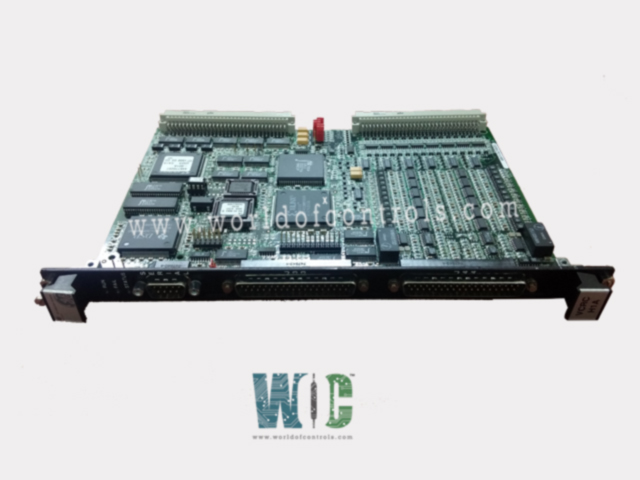
World Of Controls understands the criticality of your requirement and works towards reducing the lead time as much as possible.
IS200VCRCH1AAA - Voltage Control Reference Card is available in stock which ships the same day.
IS200VCRCH1AAA - Voltage Control Reference Card comes in UNUSED as well as REBUILT condition.
To avail our best deals for IS200VCRCH1AAA - Voltage Control Reference Card, contact us and we will get back to you within 24 hours.
SPECIFICATIONS:
Part Number: IS200VCRCH1AAA
Manufacturer: General Electric
Series: Mark VI
Product Type: Voltage Control Reference Card
Number of Channels: 48
Input Isolation: 1500 V
Input Filter: 4 ms
AC Voltage Rejection: 60 V RMS
Voltage Range: 18 - 32 VDC
Mounting: DIN-rail mounting
Terminals: 24
Technology: Surface mount
Operating temperature: 0 to 60°C
Size: 26.04 cm high x 1.99 cm wide
Repair: 3-7 Day
Availability: In Stock
Country of Origin/Manufacturer: United States
Manual: GEH-6421H
FUNCTIONAL DESCRIPTION:
IS200VCRCH1AAA is a Voltage Control Reference Card manufactured and designed by General Electric as part of the Mark VI Series used in GE Speedtronic Turbine Control Systems. Voltage Control Reference Card (VCCC) with its associated daughterboard accepts 48 discrete inputs and controls 24 relay outputs from four terminal boards. VCCC is a double-width module and mounts in the VME I/O rack. This rack has two sets of J3/J4 plugs for cables to the TBCI and TRLY terminal boards. VCRC is a narrower board and can be used instead of the VCCC.
CONTACT INPUTS:
The first 24 dry contact inputs are wired to a contact input terminal board (TBCI), and a second terminal board is required for inputs 25 - 48. DC power for the contacts is provided. Cables with molded plugs connect the terminal board to the VME rack where the VCCC processor board is located. High-speed scanning and recording at a 1 ms rate is available for inputs monitoring important turbine variables. The sequence of events (SOE) recorder reports all contact openings and closures with a time resolution of 1 ms. Contact chatter and pulse widths down to 6 ms are reported.
RELAY OUTPUTS:
TRLYH1B holds twelve plug-in magnetic relays. The first six relay circuits can be jumpers configured for dry, Form-C contact outputs, or to drive external solenoids. A standard 125 V dc or 115 V ac source, or an optional 24 V dc source, with individual jumper selectable fuses and onboard suppression, can be provided for field solenoid power. The next five relays (7 - 11) are un-powered isolated Form-C contacts. Output 12 is an isolated Form-C contact, used for special applications such as for ignition transformers.
OPERATION:
In the VCCC the input voltages pass through optical isolators and are sampled at the frame rate for control functions, and 1 ms for SOE reporting. The signals are transferred over the VME backplane to the VCMI. The VCMI then sends them to the controller. Filters reduce high-frequency noise and suppress surge on each input near the point of signal exit. Noise and contact bounce are filtered with a 4 ms filter. Ac voltage rejection (50/60 Hz) is 60 V rms with 125 V dc excitation.
WOC has the largest stock of OEM Replacement Parts for GE Speedtronic Control Systems. We can also repair your faulty boards and supply unused and rebuilt boards backed up with a warranty. Our team of experts is available round the clock to support your OEM needs. Our team of experts at WOC is happy to assist you with any of your automation requirements. For pricing and availability on parts and repairs, kindly contact our team by phone or email.
What kind of inputs does a Voltage Control Reference Card process?
A typical Voltage Control Reference Card, like the IS200VCRCH1AAA, processes discrete inputs (dry contact inputs) from terminal boards and relays, handling signals such as open/close states, and monitoring important variables.
What are discrete inputs, and why are they important in voltage control?
Discrete inputs represent binary conditions, like on/off or open/close. In voltage control, these inputs allow the system to track the status of various components and initiate corresponding control actions based on the inputs received.
How does the Voltage Control Reference Card ensure voltage isolation?
The card typically provides high input isolation, such as 1500 V, which ensures that voltage surges or differences do not affect the sensitive control circuits, protecting both the system and operators.